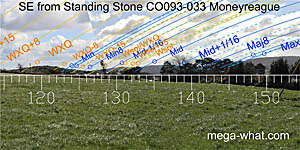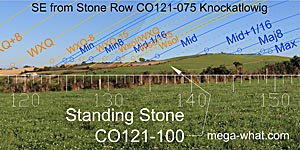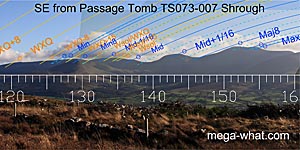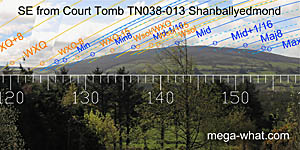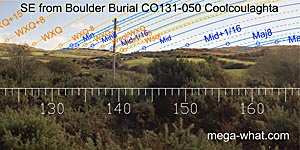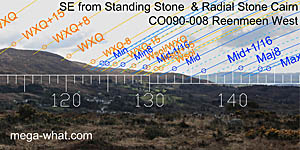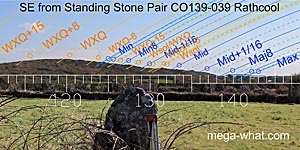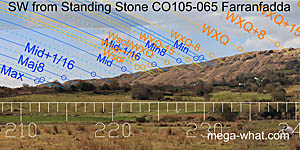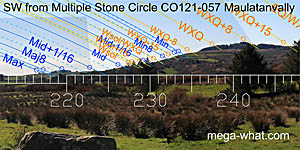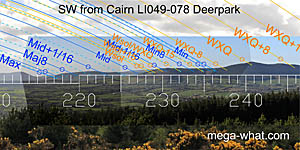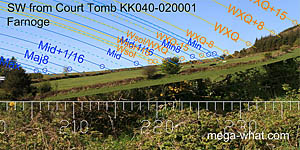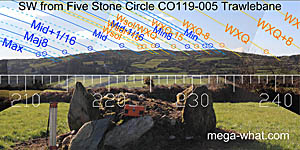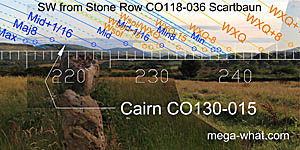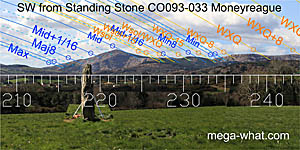- Orange Solar trajectories split the tropical year into 48 "Tweeks" (7.6 day mean) that are better regarded as quarter-months.
- Solid Blue Lunar lines split cyclical lunistice position variation into 16 periods of about 14 months each.
mega-what / whole horizon analysis


Southern Lunistice Ranges
Tap/Click pics for big ones, names for site pages. Prehistoric luni-solar trajectories.
A LunisticeLunistices are the most northerly and southerly moons of the month.
The lunar equivalent of solstices. More. Range is the part of a horizon quadrant within which Lunistices always rise or set.
Strictly speaking, it is a zone between the Major and Minor Standstills
Lunistice positions vary cyclically over an 18.6 year period but are fairly static for more than a year at either end of the range
of the moon but always overlaps with a part of the solar zone that is beyond the Cross-Quarters.
Cross-Quarters are the days half-way between the equinox and a solstice
These examples are of Southern Ranges where Lunistices may be best observed during the summer half of the year.
Lunistices rising in the South-East first become visible after Winter Solstice, as a thin waning crescent before sunrise.
They then progress monthly, going backwards through both night and phase, until full moon nearest the Summer Solstice which is the last visible Lunistice of the series.
This Solstitial full moon is also the first Lunistice to be visible as it sets in the South-West. These setting Lunistices in the South-West then diminish monthly until the last, a thin waxing crescent just before Winter Solstice.
Horizontal Parallax shifts the apparent position of the moon nearer to the equator. This means that Northern and Southern lunistice ranges have different relationships between solar and lunar positions.
In the South, the Cross-Quarter (WXQ) is further away from the Minor Standstill (Min) position and so its southern quarter-month bracket (WXQ-8) becomes a closer delimiter of the lunistice range.
| Home | Site Lists | More SE ranges | More SW ranges | Glossary |
